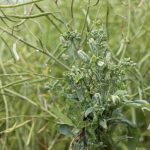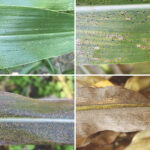
Heading off aster yellows in field crops
A new rapid test may help diagnose the disease in time to take action with fungicide

Don’t be a silly one, scout for verticillium

Tar spot continues to spread in Ontario
The infected region has expanded from five counties in 2020 to 19 in 2021

What’s up with fungicide resistance?
Resistance is hardly top of mind for most growers, but there are signs it should be climbing the ladder

Sudden death syndrome threat in soybeans is climbing
SDS is attracting more attention as a companion of soybean cyst nematodes

Swift removal of infected plants key for clubroot control
You can kill the plant, but the pathogens remain to continue infecting the soil

Pest Patrol: Soybean cyst nematode (SCN) and sudden death syndrome (SDS)
#PestPatrol with Albert Tenuta, OMAFRA

How to keep sclerotinia infection to less than five per cent
New research shows fungicide applied at or just after 20 per cent flowering is still the best way to stop sclerotinia stem rot from shredding canola profits

Disease considerations for a late and wet spring
In the west, it could mean more clubroot transmission. In the east, growers should be concerned about phytophthora in soybeans

Soybean and corn disease threats in Eastern Canada
Growers will need to use all their experience, best management practices and new tools to successfully combat disease in 2020


